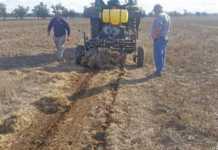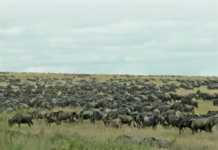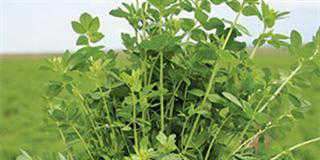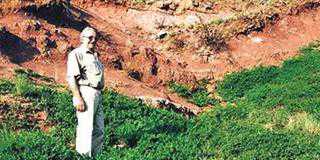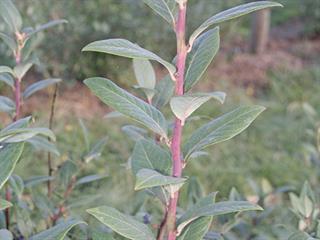
Israel was one of the pioneers of drip fertigation, and has used the techniques to turn desert into highly productive agricultural land. But this does not mean that drip fertigation has universal application. In fact, it is counter-productive to biological farming and can create serious problems. There is a considerable difference between feeding plants through drip irrigation on infertile desert sand and doing the same on fertile soil in high-rainfall areas.
Trevor Cunningham, who farms in the Dullstroom area of Mpumalanga, learnt this when he decided to boost his income by planting blueberries. The initial economic projections looked very good indeed, promising a realistic gross income of R500 000/ ha, and Trevor planted 2ha on virgin soil in 2002.
The area chosen was in a valley in a distant corner of the farm. At the time, the cost of erecting a covered orchard was R120 000/ha. The bushes were partly fertilised through drip fertigation and partly by hand. Growth, however, turned out to be disappointing, a fact that Trevor attributed to the soil and the severe cold in the valley. This continued for three frustrating years, after which he decided to transplant the bushes to a sericea land close to his homestead. Here the land is higher and much warmer, with a north/west aspect, and he could keep a close eye on the plants.
At the same time, he planted an additional 2ha to blueberries and increased the overall area fed with drip fertigation,
as the method is much easier than applying fertiliser by hand. After all this effort, it’s easy to imagine Trevor’s disappointment when the land failed yet again to produce vigorous, fast-growing bushes.
Surprising findings
I asked Trevor to take soil samples in the row between the bushes and in the pathway between the rows. What a revelation! Here are the most significant findings:
- The total exchange capacity, a measurement of the soil’s ability to hold plant nutrients, was 36% lower in the rows than in the pathways.
- In-row calcium and magnesium base saturation percentages were 54% and 51% lower respectively than in the pathways.
- In-row manganese and zinc levels were 39% and 103% lower respectively.
- Remarkably, the soil phosphorous level in the row was 204% higher than in the pathway. In fact, it had reached a level that would interfere with the uptake of micro-nutrients, and especially zinc.
It should now be clear that the concentration of fertiliser can have very serious consequences, disrupting the desired soil mineral balance and creating serious micro-nutrient deficiencies. Trevor then dug a trench across the row and into the pathway. We were astonished to find that all the young tree roots were concentrated around the drip points in the row; no major roots had spread into the pathways. From this, it was obvious that the soil in the pathway was making little or no contribution to feeding the plant.
An even spread is the answer
All chemical fertilisers are toxic to the micro-organisms that supply nature’s plant food. When a moderate amount of chemical fertiliser is distributed evenly over a hectare, the microbes have a far better chance of surviving than when the same amount is concentrated under a dripper point. And here, the first microbes to be obliterated are those that keep pathogenic microbes under control. So with drip-fertigation you set yourself up for potential plant nutritional deficiencies and plant diseases.
In regions with sufficient rainfall to support crop production, my advice is to spread fertiliser across the entire land and use the irrigation system to provide water only.


